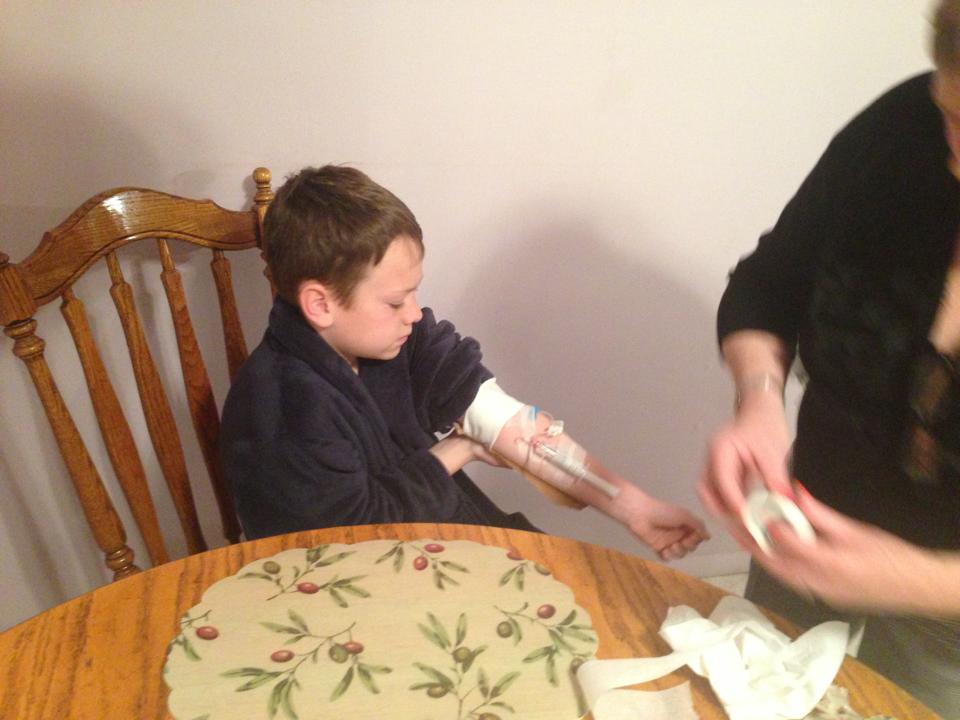The fear of any parent with a chronic disease is that they will pass it on to their children. While I have learned to live with T1D, and my wife has learned to tolerate me…..The last thing we want is for our children to bear the burden of living with the same hurdles in life I have had to.
The TRIGR study is a prevention study focused on the comparison between breast fed children, during the first year after birth, and those who drink cow’s milk based formula. The hypothesis is that the cow’s milk based formula, having more complex proteins than human milk, tax the system and increase the risk of developing diabetes for those children with the genetic markers, and therefore, are already at risk.
Knowing the risk, we enrolled in this study through my childhood Endocrinologist and researcher, Dr. Dorothy Becker. She always told my parents and I, “My job is to myself out of a job”. That’s the same line she uses today.
They took a sample from the cord blood at birth, to determine whether or not Jake had the genetic predisposition, or the marker, to develop T1D. Honestly, I enrolled in the study, not to have the annual blood work done, but to hopefully get kicked out of the study because he didn’t have the marker. No such luck.
So, every year, around his birthday, Jake endures a blood draw to test his blood glucose and to have his blood tested for antibodies known to cause T1D. There are five (5) antibodies, that in combinations of 2 or more, are known to increase the risk of developing T1D. The risk rises from 5% to 50%.
Two years ago, Jake started developing two (2) of the antibodies and those same antibodies were visible last year as well. I’m not flat out saying that my wife and I are a nervous bunch, but there is a reason we fight to raise money for JDRF.
This year, in addition to the blood draw, he also had to have a glucose tolerance test. Similar to the pne high risk Mom’s take when they are tested for gestational diabetes. It is fasting, they take your blood, then make you drink a gross, sugary drink and then return for more blood later. He drank the drink and hardly complained.
So, random thoughts. My daughter also has the same antibodies being produced by her immune system. She has been tested in the TrialNet study. I wonder…..are these the antibodies that my body produces? Or produced prior to my diagnosis? We don’t know. I’ve never been tested for antibodies. When I was diagnosed 30 years ago, they didn’t have antibody tests.
The first blood draw showed a blood glucose of 90. The second draw, unfortunately, they didn’t test his blood at the house. They will be doing so at the lab. So we wait for the results. We also have to wait 4-6 weeks for the antibody results to come back. Again, not too anxious…yeah right.
The benefit of having our children in these studies is that they are finding, for those who are diagnosed with T1D, they are being diagnosed without traumatic events. Instead, they are being diagnosed during or after these screenings, prior to any significant diminishing health status and without ER visits.
Within the next year, they TRIGR research team is going to be releasing the first round of results. The intent is to gain knowledge about how we might be able to reduce the risk for those we know are at risk. And with 80 people being diagnosed every day (40 kids and 40 adults) there is an increase in prevalence, and this information is severely needed.
For more information on the JDRF, please visit www.jdrf.org
To make a donation to a JDRF fundraiser, please visit: https://runsignup.com/Race/NJ/LoganTownship/MikesMilesfortheJDRFCedarvaleWinery5K1MileFunRun







